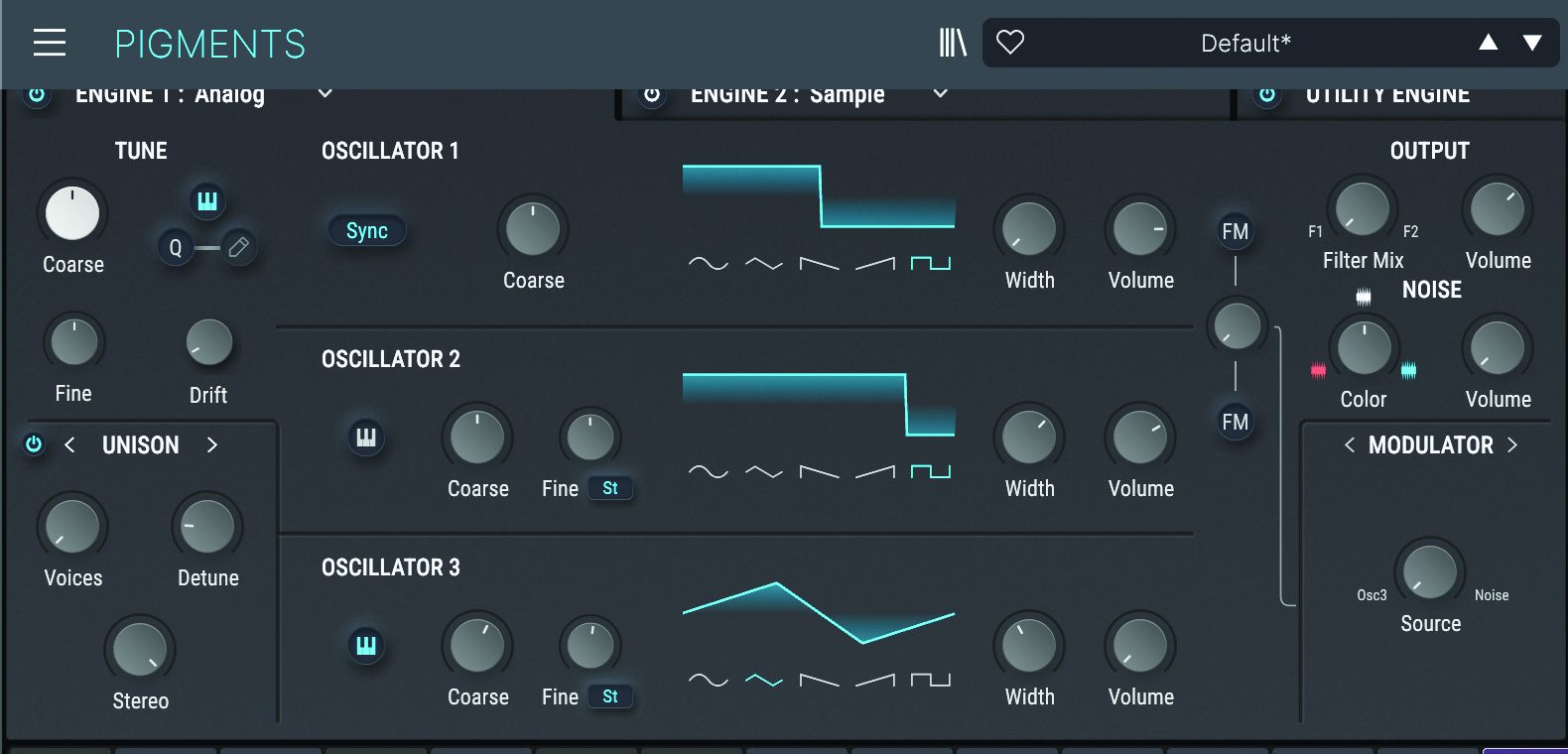How to use FM and oscillator sync to bring synth bass to life
Spice up your bass sounds with this classic technique

Audio-rate modulation is the main technique behind synths like Yamaha’s DX7, but a more basic version can be used in many analogue or analogue-style synths.
Let’s use a touch of FM as well as oscillator sync to add harmonic interest to a simple bass sound...

We’re starting with a simple analogue-style bass patch from Arturia Pigments. It uses a square wave with a sine sub-oscillator provided by the Utility Engine. A low-pass filter with a short modulation envelope is adding a punchy attack. It’s a decent sound, but hardly original.

Pigments’ analogue engine lets us apply frequency modulation to oscillators 1 and 2 using Osc 3 as a source. For now, let’s keep the volume of Oscillators 2 and 3 down to zero, but we increase FM to osc 1 a little to 0.020. Our square wave starts to sound ‘hollow’.

Altering the shape and tuning of Oscillator 3 lets us get creative with this effect. Tuning Osc 3 up by seven semitones, adding a little detune and switching to a triangle wave gives us a more interesting, slightly dissonant tone.

Oscillator sync gives us another way to introduce interesting timbres. To try this, we turn off the FM and raise the level of Osc 2. This is set to a pulse wave with a width of 0.800. Now we disengage key tracking for Oscillator 2 but engage oscillator sync instead.

This effect becomes most interesting with modulation. We set up LFO 1 to modulate to coarse tuning of Osc 2. Oscillator sync keeps this from sounding too harsh, but it still creates an interesting timbral effect.
Want all the hottest music and gear news, reviews, deals, features and more, direct to your inbox? Sign up here.

We now reintroduce the FM effect too, experimenting with different wave shapes as well as modulation levels/speeds lets us create all sorts of unusual effects.
Future Music is the number one magazine for today's producers. Packed with technique and technology we'll help you make great new music. All-access artist interviews, in-depth gear reviews, essential production tutorials and much more. Every marvellous monthly edition features reliable reviews of the latest and greatest hardware and software technology and techniques, unparalleled advice, in-depth interviews, sensational free samples and so much more to improve the experience and outcome of your music-making.
